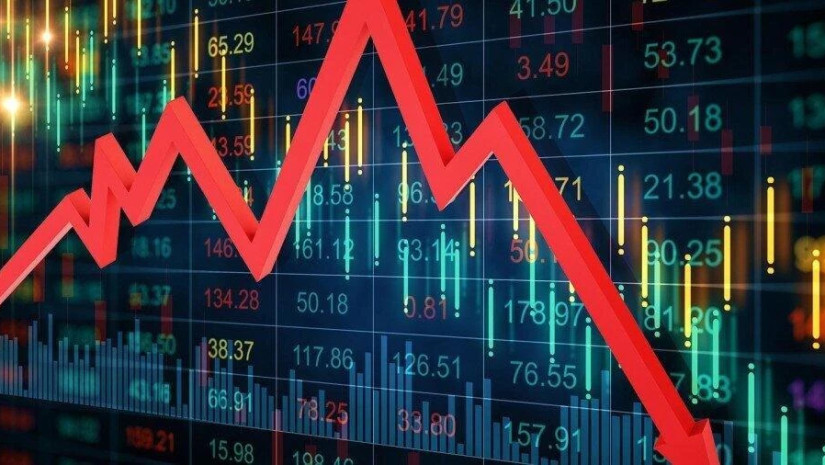As stewards of capital and investment portfolios, the most important question investors and fund managers face today is whether the 40-year trend of disinflation was ending in 2021? And whether a longer-term structural bear market started in 2022.
In the first week of September 2022 the S&P was down -11% and the Nasdaq -19% for the year. investors focus on interest rate outlook, global recession risk and the question of value over growth. In bond markets rising inflation meant that fixed income was return free risk. Global bond investors, fell into a rare bear market. Double-digit losses have been the norm for fixed-income investors in 2022, whether it be by bond duration, type of debt or industry of issuer. More declines for bond investors may be on the horizon as central banks press on with efforts to tame the highest global inflation in decades.
A bear market refers to a market state characterized by falling securities prices and pessimistic investor sentiment. A market space is considered to be experiencing a bear run if the prices of securities fall 20% or more from their previous high. As more investors sell, prices drop even further, initiating a vicious selling cycle which feeds on itself and drives prices down even more.
The big political question in Washington is whether to support the dollar with higher US interest rates or whether the Fed will take the stock market weakness into account when fighting inflation.
As there are three more Fed meetings this year the market narratives might focus more on the so -called rule of 20 and the question of whether quality stocks can be an inflation hedge.
The investing rule of 20 states that when a new U.S. bull market starts, the trailing price to earnings (PE) ratio of the S&P 500 added to the inflation rate will result in a number less than 20.
In early September and the S&P 500 index around 4,000 levels the S&P 500 stood at 19.54x.
Wall Street strategists opined the the rule of 20 implies a new bull market in the short term won’t start unless inflation went to zero, the S&P 500 fell 40 per cent to 2500, or earnings are reported 50 per cent above expectations.
Wall street consensus view of 8 per cent in year over year earnings growth in 2023 might not only be aggressive - but unachievable, given the current and rising geopolitical tensions.
According to various valuation measures U.S. equity market is expensive relative to history even after the decline and losses so far this year.
The cyclically adjusted PE or CAPE ratio (also known as the Shiller PE) is 67 per cent higher than the historical average, for example, and the enterprise value to sales ratio remains 40 per cent higher than average.
So, valuations are lofty & still elevated at a time when economic growth is slowing. This is a recipe for cuts in profit expectations and investors should brace themselves for market volatility.
Global financial assets are estimated to stand at $600 trillion, six times global GDP versus a 2X multiple in the pre-QE (money printing) age. Global debt is now more than $300 trillion and concentrated in countries and sectors where it is simply never going to be paid back. The World Bank estimates 70 governments face a sovereign debt crisis and even the IMF can no longer act as the lender of last resort on such a planetary scale.
In retrospect, the White House and the Fed made a catastrophic policy error with the $10 trillion post-Covid fiscal/monetary stimulus and then compounded the error with Powell/Yellen's "inflation is transitory" mantra.
Fed monetary tightening at a time when China has faced a property bear market and Europe due to the war in Ukraine is facing an energy crisis, means that the global economy could enter a balance sheet recession even as inflation hits double digits in the West.
A recent reading on the US labour market that spells bad news for the economy good however be a bullish signal for stocks. and a reason not to become too bearish.
Companies continue to boost their earnings forecasts, while also betting that the Federal Reserve will make its last large increase in interest rates next month. The S&P 500 struggled to sustain a rebound amid fears that scorching inflation and a hawkish Fed will stall economic growth.
Wall Street data and research indicate that although U.S. business activity data suggest the worst is yet to come for the U.S. economy, corporate earnings revisions are holding up, improving the outlook for quality equities. A longer-term bear market would need lengthy period of higher interest rates to increase the pressure on profit margins. This will or could be the market focus/ debate in Q4 and for the outlook for 2003. While equity investors are worried about the impact of slowing growth on stocks, positioning data suggest they aren’t panicking yet. S&P index at 4,000 levels suggests that investors see the latest retreat spurred by concerns over hawkish central bank comments a (potentially) overdone.
The weakening economy favours continued outperformance for cheaper, so-called value stocks over growth stocks equivalents. History shows value stocks outperform around the start of recessions. The S&P 500 Growth Index trades at a 42% premium to its value counterpart, above the average over the past decade of a 35% premium.
In the U.S. stock market, value has outperformed market growth this year or the first time since 2016. The shift has been fuelled by a tightening of Federal Reserve policy, with higher rates weighing on the present value of future profits and hurting expensive valuation growth stocks, like technology. For growth to outperform value, a soft landing will be necessary. In the final analysis, it is debatable how much bad news is priced into 2022’s bear market, the prevailing scepticism toward equities could be optimistic as There is just a large negative bias for the market right now and that could be an extremely contrarian signal.
In a long-term structural bear market, it is possible to have very sharp market rallies and increased volatility.
Rainer Michael Preiss is Partner & Portfolio Strategist at Das Family Office in Singapore.
















